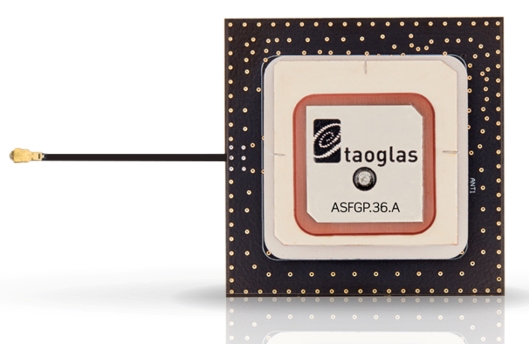Taoglas launched the industry's first series of small ultra wideband (UWB) antennas designed to enable centimeter-level positioning and angle-of-arrival applications, including asset tracking, follow-me drones, healthcare monitoring, smart home services and other applications that demand high performance indoor localization. The antennas offer high efficiency across a wide spectrum of frequency bands from 3 to 10 GHz.
Indoor wireless positioning has long been limited by technologies not designed for this purpose, such as Bluetooth, Wi-Fi and assisted GPS. Using a wide spectrum of frequencies, UWB is a low power digital wireless technology that offers better location precision and range, while transmitting large amounts of digital data over short distances. UWB’s low power requirements increase the battery life of sensors and tags, reducing operational costs.
Designed in the company's Munich engineering center, Taoglas’ UWB antennas include flexible embedded antennas and embedded SMT chip antennas. The flexible FXUWB series was developed utilizing a simple “peel and stick” assembly process; they attach securely to non-metal surfaces via 3M adhesive, with a highly flexible micro-coaxial cable mounting. The chip antennas are designed to be surface mounted directly onto a PCB. Both series covering all common UWB commercial bands and help designers future-proof devices and keep costs low.
The UWB antennas were designed for use with the DecaWave DW1000 chip and are also compatible with any other UWB sensor module on the market. Since its launch in December 2013, the DW1000 has shipped across multiple industries. The accurate location and secure communications capability of the DW1000 has been used for real-time location of people and assets in factories, hospitals and mines, for automotive keyless entry systems, for drones, connected home and sports.
“Today’s emerging applications require very precise indoor localization of assets, objects and people,” said Ronan Quinlan, co-CEO, Taoglas. “UWB can work as a type of ‘indoor GPS’ to help solve the precision dilemma for indoor applications, bringing much greater levels of precision than current technologies. We optimize complex antenna performance parameters such as the group delay, polarization and fidelity factor. Taoglas’ first-to-market line of UWB antennas are designed to help our customers capitalize on this need for real-time precision localization, with the quality, reliability and flexibility they’ve come to expect from working with Taoglas. One particular antenna we co-developed exclusively with DecaWave is the UWCCP.01 circularly polarized chip antenna, the first mass-market antenna specifically designed to enable a new generation of autonomous applications.”
“Antennas play a key role in our customers’ applications. Performance is a given for customers, but the capability to adapt to the constraints of the applications — size, shape, electronics environment — is equally important as end products get smaller and smaller. DecaWave is really pleased to partner with Taoglas, as their expertise is not only in delivering high performance, off-the-shelf antennas, but also to provide customization services that will be highly beneficial to our customers,” said Ciaran Connell, CEO and co-founder, DecaWave.

